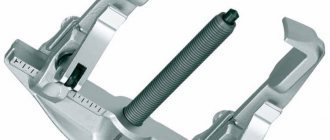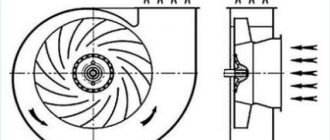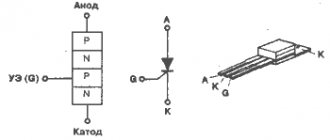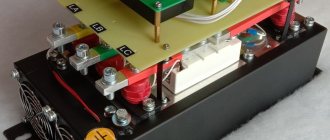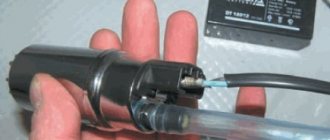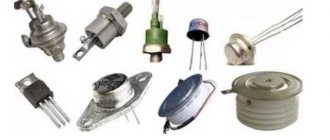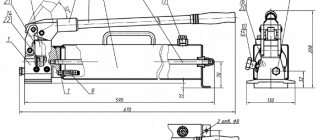For normal operation of any battery, you must always remember "The Three P's Rule"
:
- Don't overheat!
- Do not recharge!
- Do not overdischarge!
You can use the following formula to calculate the charging time for a NiMH or multi-cell battery:
Charging time (h) = Battery capacity (mAh) / Charger current (mA)
Example: We have a battery with a capacity of 2000mAh. The charging current in our charger is 500mA. We divide the battery capacity by the charging current and get 2000/500=4. This means that at a current of 500 milliamps, our battery with a capacity of 2000 milliamp hours will charge to full capacity in 4 hours!
And now in more detail about the rules that you need to try to follow for the normal operation of a nickel-metal hydride (Ni-MH) battery:
- Store Ni-MH batteries with a small amount of charge (30 - 50% of its rated capacity).
- Nickel-metal hydride batteries are more sensitive to heat than nickel-cadmium (Ni-Cd) batteries, so do not overcharge them. Overloading can negatively affect the battery's current output (the battery's ability to hold and release its accumulated charge). If you have a smart charger with “ Delta Peak
” technology (interrupting the battery charge when the voltage reaches a peak), then you can charge batteries with virtually no risk of overcharging and destroying them. - Ni-MH (nickel metal hydride) batteries can (but not necessarily!) be “trained” after purchase. 4-6 charge/discharge cycles for batteries in a high-quality charger allows you to reach the limit of capacity that was lost during the transportation and storage of batteries in questionable conditions after leaving the manufacturing plant. The number of such cycles can be completely different for batteries from different manufacturers. High-quality batteries reach their capacity limit after only 1-2 cycles, while batteries of questionable quality with artificially high capacity cannot reach their capacity limit even after 50-100 charge/discharge cycles.
- After discharging or charging, try to let the battery cool to room temperature (~20 o C). Charging batteries at temperatures below 5 o C or above 50 o C can significantly affect battery life.
- If you want to discharge a Ni-MH battery, do not discharge it to less than 0.9V for each cell. When the voltage of nickel batteries drops below 0.9V per cell, most chargers with "minimal intelligence" cannot activate the charge mode. If your charger cannot recognize a deeply discharged cell (discharged less than 0.9V), then you should resort to using a “dumb” charger or connect the battery for a short time to a power source with a current of 100-150mA until the battery voltage reaches 0.9V.
- If you constantly use the same battery assembly in an electronic device in recharging mode, then sometimes it is worth discharging each battery from the assembly to a voltage of 0.9V and fully charging it in an external charger. This complete cycling procedure should be performed once every 5-10 battery recharging cycles.
Charging table for typical Ni-MH batteries
| Element capacity | Standard size | Standard charging mode | Peak charge current | Maximum discharge current |
| 2000 mAh | A.A. | 200mA ~ 10 hours | 2000 mA | 10.0A |
| 2100 mAh | A.A. | 200mA ~ 10-11 hours | 2000 mA | 15.0A |
| 2500 mAh | A.A. | 250mA ~ 10-11 hours | 2500 mA | 20.0A |
| 2750 mAh | A.A. | 250mA ~ 10-12 hours | 2000 mA | 10.0A |
| 800 mAh | AAA | 100mA ~ 8-9 hours | 800 mA | 5.0 A |
| 1000 mAh | AAA | 100mA ~ 10-12 hours | 1000 mA | 5.0 A |
| 160 mAh | 1/3 AAA | 16mA ~ 14-16 hours | 160 mA | 480 mA |
| 400 mAh | 2/3 AAA | 50mA ~ 7-8 hours | 400 mA | 1200 mA |
| 250 mAh | 1/3 AA | 25mA ~ 14-16 hours | 250 mA | 750 mA |
| 700 mAh | 2/3 AA | 100mA ~ 7-8 hours | 500 mA | 1.0A |
| 850 mAh | FLAT | 100mA ~ 10-11 hours | 500 mA | 3.0A |
| 1100 mAh | 2/3 A | 100mA ~ 12-13 hours | 500 mA | 3.0A |
| 1200 mAh | 2/3 A | 100mA ~ 13-14 hours | 500 mA | 3.0A |
| 1300 mAh | 2/3 A | 100mA ~ 13-14 hours | 500 mA | 3.0A |
| 1500 mAh | 2/3 A | 100mA ~ 16-17 hours | 1.0A | 30.0 A |
| 2150 mAh | 4/5 A | 150mA ~ 14-16 hours | 1.5A | 10.0 A |
| 2700 mAh | A | 100mA ~ 26-27 hours | 1.5A | 10.0 A |
| 4200 mAh | Sub C | 420mA ~ 11-13 hours | 3.0A | 35.0 A |
| 4500 mAh | Sub C | 450mA ~ 11-13 hours | 3.0A | 35.0 A |
| 4000 mAh | 4/3 A | 500mA ~ 9-10 hours | 2.0A | 10.0 A |
| 5000 mAh | C | 500mA ~ 11-12 hours | 3.0A | 20.0 A |
| 10000 mAh | D | 600mA ~ 14-16 hours | 3.0A | 20.0 A |
The data in the table is valid for completely discharged batteries
It is impossible to properly charge battery power sources without understanding how charge times are calculated.
And this can be done in two ways:
1. Using our online calculator. 2. Make your own calculation using the formula.
Recharging alkaline batteries
1. Insert the batteries into the device you are using and assess their charge level. The charge should go to zero, but not reach the “zero” mark.
In other words, a flashlight with batteries should shine, but rather weakly.
2. We expose the contacts of the power supply and plug it into the outlet.
3. Using connecting wires, we connect alkaline batteries to the contacts of the unit, which need to be “shake” (recharged).
At the same time, we strictly observe polarity:
- Plus - to Plus;
- Minus - to Minus.
Note: if you mess up the polarity and Plus falls to Minus, then your batteries in such a circuit will be discharged and not recharged!!
4. If the circuit is assembled correctly and the power supply is plugged in, the battery should heat up.
At the moment when the battery temperature reaches 50 degrees Celsius, the entire network must be disconnected from the current!
5. After waiting a couple of minutes until the heated battery cools down, we close the network again by plugging the power supply into the outlet.
We continue to monitor the rise in battery temperature.
IMPORTANT: the temperature of the battery recharged in this way should not exceed 50 degrees, otherwise destructive irreversible processes may begin in the battery (or it will even explode!).
6. After a 5-minute connection/disconnection operation and temperature control, we proceed to the next mode.
7. Insert the batteries into the flashlight and check. It should shine brightly.
8. Place the alkaline batteries back into the homemade circuit and perform a shock charge. This is done simply:
- quickly plug the power supply into the outlet for a short time and immediately turn it off.
The overall operation lasts about 2 minutes, during which we manage to plug and unplug the power supply from the outlet several times.
To put it simply, you need to provide a “shock” mode of intermittent current supply to the batteries. At the time of shock charging, temperature may NOT be taken into account.
9. At the end of 2 minutes of such torment, we can measure the voltage - it should be even higher than the nominal one! But when heated, the batteries will lose their energy, which means:
10. Place the batteries directly in the freezer (not the refrigerator, but the freezer), where they should cool.
11. Take the cooled alkaline batteries out of the freezer and wait until they reach room temperature. Once again we test the current sources in a flashlight, watch, player or multimeter (tester).
How long does it take to charge batteries?
The charging time can be determined by dividing the battery capacity by the charger current. In this case, it is important to take into account the coefficients of conversion of electricity into heat, energy dissipation coefficients, which take values from 1.2 to 1.6.
The charge coefficient can be taken from the calculation of the ratio of the charge current to the battery capacity. The greater this difference, the larger the coefficient should be used.
Note: the online calculator “how long to charge batteries”, located above this article on our website, works in a similar way.
How to understand how long to keep charging the battery
It may well happen that after putting the battery on charge and waiting for some time, you discover that no charging has occurred. There is no need to suffer any further. Clearly something went wrong. Maybe the battery itself is faulty, or maybe the charger is faulty.
The most important thing when dealing with batteries is to charge them correctly. And for this you need to know exactly and observe their charging time.
To determine this time, you can go in two ways:
- Go to one of the specialized sites and calculate everything in an online calculator. Everything here is simple and clear.
- You can calculate this time yourself. A formula has been developed for this.
Formula for calculating charging time and its fineness
To calculate the time required to fully charge the battery, use the formula:
Time required for charging = battery capacity / current * recharge coefficient, which ensures a 100% charge.
The coefficient can be from 1.2 to 1.4
For this formula to work, the following factors must be taken into account:
- In order to charge the battery, you need to spend from four to twenty hours. No more, but no less. If the battery is charged earlier than four hours, the charger itself will stop supplying current. The battery can now be used. If the battery has not been charged in more than twenty hours, then the current strength is very low. In this state, the battery can remain in the charger for almost a week. It won't do him any harm.
- The capacity value can be taken from the battery case, or you can find it out from the information on the packaging or in the instructions.
- The current required for charging is written on the battery case, and it is also duplicated in the instructions.
The time it takes to recharge is not constant. This depends on several factors:
- chemicals included in the battery;
- ambient temperature;
- amount of charge remaining in the battery.
Number of recharge cycles
When using rechargeable batteries, be aware that they do not last forever. Their resource is gradually decreasing, and each new charge brings this closer. For example, batteries based on nickel and cadmium can be recharged between a thousand and one and a half thousand times. True, newer batteries can be recharged up to four thousand times.
The main thing for a battery is the first four recharge cycles. At this time, the battery capacity “builds up”, which will remain throughout the entire operation of the product.
Do not be lazy to study the instructions for the battery in detail. They are written by smart people and describe in detail how to charge the device.
Reference. Recently produced batteries, as a rule, can be used for almost three years.
How long do you have to wait for the battery to charge?
Calculating the amount of time required to fully recharge a battery is easy. To do this, divide the battery capacity by the charger current. Do not forget to take into account the coefficients. They range from 1.2 to 1.6.
To find out which coefficient needs to be applied, let's look at the difference between the current and the battery capacity value. The greater the interval between them, the greater the coefficient value we use.
Online calculators on special websites operate on exactly the same principles.
Features of the formula
The above formula:
charging time = (battery capacity / charging current) * coefficient
is advisable if the following conditions are met:
1. The battery charge time is within 4-20 hours, no more and no less.
If the charging time is less than 4 hours: a full-fledged charger that supplies similar currents must automatically stop supplying electric current. The battery can then be removed and used.
If the charging time is more than 20 hours: there is no point in worrying about harm to the batteries. Such low charging currents will not harm the batteries.
Moreover, the battery can remain in low-power chargers for almost a whole week! (6-7 full days without visible damage to the battery).
2. Battery capacity - indicated on the packaging, on the case, in the attached documentation, in the instructions, on the battery case. Units of measurement are mAh (milliamp-hours, ampere-hours).
3. Charging current - indicated on the case, in the instructions, in the documentation, set manually, reflected on the display (if any) of the charger. Units of measurement are mA (milliamps, amperes).
Factors affecting battery charging time
The battery charging time depends on the initial discharge level, charging current, room temperature and other factors. At the initial stage there is a fast charge, but gradually the charging current decreases. A sign of a charged battery is a decrease in the received current to 2–3 mA for each Ah of capacity. Further bringing the charge level to the maximum is carried out with low currents for about another hour.
It is advisable to charge batteries at room temperature – about 20 °C. At lower temperatures, the duration of the charging process increases, and at sub-zero temperatures the batteries cannot be charged. After working in the cold, the batteries must first be kept in a room with above-zero temperatures for about an hour and only then charged. It is advisable to use chargers with a temperature compensation function - changing the voltage taking into account the external temperature.
Time definition examples
Given: Battery capacity - 1000 mAh Charger current - 150 mAh Coefficient - 1.2-1.6 (1.4 average) Charging time - (1000/150) * 1.4 = 9.3 hours (9 hours 15 -20 minutes).
This will be the AVERAGE charging time, because... we took the average coefficient - 1.4 (the same value is in the online calculator)!
In this case, the battery charging speed may vary depending on:
- temperature;
- chemical composition of batteries;
- initial charge stored in the battery.
Additional Tips
Depending on the battery device, they may take different amounts of time to charge:
- An acid battery made of lead and used in a car is charged with a current of 0.1 of the rated value. The time is ten o'clock. If the capacity is 50 A/h, then a current of 5 A is required. The condition of the lead plates will not deteriorate from a full charge.
- Another type is nickel-cadmium batteries. Types: finger and little finger. For the charging procedure, chargers are used, which indicate the required current value. To determine the time, use the calculation method described above.
- Polymer batteries made from lithium. The battery is charged using pulsed currents. Charge control is carried out using the charger processor. The time depends on the current. The time range is 30-60 minutes.
Lithium polymer batteries
The first two types of batteries must be fully charged. But the last type does not need to be charged; a full charge is murder for them.
Number of cycles
It is worth remembering that each time you recharge a battery, its service life deteriorates. Thus, for nickel-cadmium batteries no more than 1000-1500 discharge/charge cycles are allowed.
For modern batteries, they are trying to increase this figure, bringing it to 4000 cycles.
And if a brand new rechargeable battery has completed the full “training” course 3-4 times, then it is considered that it has reached performance characteristics that will be maintained throughout its entire service life.
You can learn about how to properly use rechargeable batteries, precautions and other tricks:
- in technical documentation;
- in the operating instructions;
- in the articles on our site.
The lifespan of an average rechargeable battery is 3 years.
AA batteries are the most common and sold along with pinky batteries. They are a type of finger-type battery and have been produced since 1907. Galvanic batteries have characteristics that are optimally suited for many modern devices. This leads to a wide scope of application, a large selection among domestic and foreign manufacturers.
Contents
Power supplies marked AA have different characteristics depending on the type of electrode installed. But they also have identical characteristics. First of all, these are the sizes.
Battery AA li-ion
AA AA batteries are a cylinder with a diameter of 13.5 to 14.5 millimeters. The length together with the contact protrusion (it occupies about a quarter of the main diameter) is 50.5 millimeters. The cylindrical part is completely covered with an insulated shell to avoid possible short circuits or corrosion.
The terminals are located on different sides of the battery. On the positive terminal there is a protrusion, the height of which is about 1 millimeter. A negative terminal is a flat or slightly raised surface.
The weight of power supplies varies. Salt ones weigh approximately 14-18 grams, alkaline ones - from 22 to 24 grams, and nickel ones - 30 grams. The latter option is equipped with a voltage converter, therefore such batteries can be charged, that is, they perform the functions of batteries and in fact are them.
Charging methods
There are several methods by which you can charge the battery. Let's look at three ways to charge the battery:
- The device is charged using constant current. This method is the fastest.
- The device can be charged using constant voltage. You can apply varying voltage or constant voltage.
- The last method is combined. This method is divided into two stages. First you need to apply a constant current. The current value should be a tenth of the nominal value. When the voltage reaches 14.5 V, constant voltage is switched on. The second stage involves applying constant voltage. The current becomes less, so the internal resistance becomes greater.
The last method discussed is the most optimal if time is not the main factor. Gas formation and hydrolysis will be excluded. This occurs due to the supply of high voltage.
Do not forget that after the next recharge the battery life becomes worse. Nickel-cadmium batteries have only 1000 discharge/charge cycles.
Modern power components can have up to 3500-4000 discharge/charge cycles. How to use the battery correctly, read the technical documents and instructions. This article will also help you.
The service life of an ordinary average battery is three years or slightly less. Remember that devices cannot be recharged.
Lithium-ion battery (li-ion)
An important characteristic of the charger is the charge current:
- with low current - gentle mode, there will be no overheating, but charging may take up to a day;
- with average current - do not heat up, practically do not affect the service life, charging lasts about 6 hours;
- with high current - very fast charging in a few hours, but if the battery is of poor quality, it can quickly become unusable.
Attention is also paid to the possibility of memorization. Chargers with intelligence function select the appropriate mode and time.
There is no need to perform any special manipulations. Most chargers are powered by AC power, so the voltage needs to be more or less stable. Batteries can be charged at any stage, but it is advisable to complete the charging cycle (this protects the filling from rapid deterioration). The main thing is not to confuse the polarity.
There is no particular difference between AA batteries from different manufacturers. The main thing is to pay attention to the type of power source and the difference in capacity. Devices from Eneloop, Robiton, Varta, GP, Duracell, Xiaomi, Camelion have a good quality-to-price ratio.
Battery AA NiСd
First of all, you need to pay attention to the type and decoding of the values. Depending on the device for which AA AA batteries are selected. You should also pay attention to:
- current strength;
- voltage (from 1.25 to 3.7 Volts);
- capacity;
- power;
- life time;
- charge-discharge cycle;
- operating temperature range.
A properly selected device can last up to 20 years. Of course, this period depends on the intensity of use.
We often miss good shots in the forest or at sea, we may be late or stumble in the dark because a simple battery from a camera, watch or flashlight suddenly runs out. It's hard to say exactly when the charge will be used up, unless this is a Duracell model with an indicator. But don't despair! Thanks to a few tips, you can avoid unpredictable situations and take the intended photographs from a digital camera, find out the exact time, illuminate the road, etc. In this article, we will tell you how to charge batteries at home without a charger, which will make life much easier in unpredictable situations.
Know that to charge alkaline batteries you can use a special charger that can relatively quickly restore a discharged item. But each charging session will reduce its operating life by approximately 1/3. In addition, leakage is possible.
Note! At home you can charge: alkaline (alkaline) AA batteries. Don't: salt. The possibility of leakage or even explosion cannot be ruled out!
Charging can be done using various methods. Therefore, you should not throw away an element as soon as it stops serving. A few recommendations - and he is back in action. The first method, using which you can charge AA batteries yourself without a charger. We connect the power supply to the network. Next, using the connection wires, we connect the used battery to the unit. Don't forget about polarity: plus is connected to plus, and minus is connected to minus. It’s quite easy to find where the “-\+” of a discharged object is: they are marked on the body.
Having connected the battery to the power source, wait until it warms up to fifty degrees and turn off the power. Next, wait a few minutes for the heated object to cool down. Otherwise, it may explode. Then, while the AA is still warm, it needs to be charged in a different way. It consists of the following: connect the power supply to electricity and disconnect it. This should take about 120 seconds. Next, we place the object to be charged in the “freezer” for 10 minutes, then take it out and wait 2-3 minutes for it to warm up. That's it, the charge is restored right at home without a charger! You can safely use it for the same computer mouse.
Main rules:
- The charge is not feasible if you arrange the + and - in a different way. On the contrary, the battery will drain even faster.
- It is permissible to charge the object at home 1-2 times.
- Using the method described above, you can only charge simple AA alkaline batteries.
- The charge can be carried out in any ambient temperature conditions.
Another charging method is the conventional heating method. But it is fraught with consequences (explosion). In this way, you can restore, again, small alkaline batteries at home. You can also charge them in a simpler way - place discharged objects in hot water, but for no more than 20 seconds, otherwise sad results are possible. Another simple way is to flatten or reduce the volume of the element with your own hands. This way you can charge various AA batteries. There is an example when a person, after the charge of a cast-ion battery had expired, simply took it out and stomped on it, after which the charge indicator showed one hundred percent.
You can also restore the charge without a charger this way: we make 2 holes with an awl near each carbon rod with a depth of three-quarters of the height of the element itself. We pour liquid into them and seal them, covering them with resin or plasticine. You can pour not just liquid, but an eight to ten percent solution of hydrochloric acid or double vinegar. Pour the solution several times to ensure sufficient saturation. This method allows you to charge up to seventy to eighty percent of the initial capacity.
Video instructions for restoring Duracell using phone charging
Another way to charge the product: open the cell cover with a knife. If the zinc cylinder, the object's rod and the carbon powder are intact, then immerse the object in the salt solution. Its ratio is as follows: 2 tablespoons of table salt per several glasses of liquid. Next, boil the solution together with the element for about ten to fifteen minutes. Then we return the gaskets responsible for sealing to their place and cover them with wax or plasticine.
In the modern world there are many devices and rechargeable batteries are already a necessity. While some people change one battery after another, others simply charge the battery. In order for the product to last as long as possible, it is necessary to follow the recommendations for charging and operation and select them in accordance with the requirements of the devices.
Contents
History of discovery
Many scientific discoveries are made by people far from the field in which the discovery finds its application. The same thing happened with batteries. The phenomenon of the flow of electric current between different metals in a salty environment was discovered by the physiologist Luigi Galvani, and since then it has been called galvanism. This happened completely by accident: while dissecting the frogs, the laboratory assistant noticed the twitching of their legs when in contact with a scalpel. The instrument was made of steel, and the frogs were secured with copper clamps, the medium being their muscles. This was the first galvanic cell. The electrical impulse excited the nerve endings in the paws, which led to muscle contraction.
The strange behavior of frogs led to the emergence of the theory of galvanism, which was tested by a friend of the physiologist, Alessandro Volta. He continued his research into the phenomenon and created the first battery in 1800. Of course, it was not much like modern ones, and it was still very far from everyday use - electrical appliances were mainly found in scientific laboratories, and were shown to ordinary people at circus performances as interesting curiosities.
What batteries can be charged?
You can only charge rechargeable batteries that are marked as such on the case. It is forbidden to insert the most ordinary models into the memory, no matter what type they are - AA or smaller.
Battery AA NiСd
If you violate safety rules, be prepared for:
- Nothing will happen, then you can be considered lucky;
- The battery will hiss and deteriorate;
- Overheating, fire and even explosion are possible;
- Short circuit in the network.
Depending on the materials, batteries are of the following types:
- Nickel metal hydride;
- Nickel-cadmium;
- Nickel-zinc NiZn;
- Lithium-ion;
- Lithium polymer.
The nickel-cadmium battery has a memory effect, so it must be fully discharged and recharged. Nickel metal hydride also has a memory effect, but it is kept to a minimum.
Rechargeable batteries have standard sizes similar to classic models:
- Little finger (AAA)
- Finger (AA).
- Thumbelina type C.
- Keg or D battery.
- Crown or Corundum.
- 1/2 AA.
- Large square.
There can be both batteries and accumulators of such standard sizes, because of this it is very important not to confuse them. It's worth noting that there are no coin cell batteries, with the exception of a limited edition for hearing aids.
There are also Li-Ion batteries in the following sizes, and they can be charged:
| Designation | Height, mm | Diameter, mm | Voltage, V |
| 10180 | 18 | 10 | 3,7 |
| 10280 | 28 | 10 | 3,7 |
| 10440 (AAA) | 44 | 10 | 3,7 |
| 14250 | 25 | 14 | 3,7 |
| 14500 (AA) | 50 | 14 | 3,7 |
| 15270 | 27 | 15 | 3,7 |
| 16340 | 34.5 | 17 | 3,7 |
| 17500 | 50 | 17 | 3,7 |
| 17670 | 67 | 17 | 3,7 |
| 18500 | 50 | 18 | 3,7 |
| 18650 | 65 | 18 | 3,7 |
| 22650 type B | 65 | 22 | 3,7 |
| 25500 type C | 50 | 25 | 3,7 |
| 26650 | 65 | 26 | 3,7 |
| 32600 type D | 61 | 34 | 3,7 |
The type of battery is selected for specific devices. Cameras will accept AA, but some toys will require a barrel. The most popular are still 10440 and AAA.
Battery capacity can vary from 150 mAh to 6000 mAh. The larger the capacity, the more expensive the device. The capacity size is indicated on the case in large letters. The larger the capacity, the longer the device can work.
Advertisements on NN.RU - Hobby
To add an advert
Natalya Stepanova. Magic-7
Year of release 2003 Good preservation Author Natalya Stepanova Publication format 130x200 mm (medium format) Number of pages 448 ISBN... Price: 470 rub.
Vladislav Bakhrevsky. Troubles
Year of release 1996Preservation GoodAuthor Vladislav BakhrevskyPublication format 130x200 mm (medium format)Number of pages 523ISBN... Price: 330 rub.
Illustrated Encyclopedic Dictionary
Year of release 1997Preservation GoodNumber of pages 424ISBN 5-89355-029-3Publisher Reader's Digest Publishing HouseBinding... Price: 700 rub.
Lazar Iosifovich Lagin. Old Man Hottabych
Author Lagin Lazar IosifovichPublishing house YunatstvaYear of release 1984Author on the cover L. LaginPublication type Separate editionType... Price: 225 rub.
Kids time. Let's help a child make his dream come true
Every child can become outstanding, everyone is capable of fulfilling their dreams. The main thing is to correctly determine what he likes, and...
Efremov’s defense has already appealed the verdict
In the Pochinkovsky district, a car full of teenagers overturned. Six people were injured
Seven workers fell from a height at a construction site in the Prioksky district
This is interesting: Is it possible to mix g12 and g12 antifreeze
Why can't you charge regular batteries?
Disposable cells have a completely different operating principle - ions flow from the electrolyte to the electrodes. Over time, their supply runs out, and then the battery runs out. If you pass current through a conventional model, the recovery process simply will not occur. For example, during operation of zinc-manganese batteries, the zinc electrode will dissolve.
The batteries are designed in such a way that the indicators of electrolytes and electrodes can be returned to the original version. When such a battery is connected to a charger, oxygen and hydrogen ions are converted from the electrolyte. The reduction process begins, where hydrogen acts as a catalyst for converting the cathode into lead, and oxygen – the anode into lead dioxide.
Can Duracell batteries be recharged?
- sufficiently high capacity transferred to the load;
- the ability to charge from any phone charger with a micro-USB cable;
- high charging speed;
- complete coincidence of the output voltage with the rating of standard batteries;
- high stability of output voltage;
- short circuit protection.
Useful tips Connection diagrams Principles of operation of devices Main concepts Meters from Energomer Precautions Incandescent lamps Video instructions for the master Testing with a multimeter
How to determine if it is a battery or an accumulator
Before purchasing, you should know a few nuances that will help you identify regular batteries from rechargeable ones:
- Pay attention to the inscription on the case. If there is a capacity, then it is a battery; it is indicated in mah (milliamps) per hour. The higher this indicator, the longer it will last.
- If the case says rechargeable, then it is rechargeable. If the inscription sounds like do not recharge, then recharging is prohibited.
- Please pay attention to the cost of the product. Regular batteries are cheaper than rechargeable batteries. The price directly depends on power indicators and recharge cycles.
- Rechargeable batteries have a greater safety margin. They last a long time and charge gradually, but ordinary batteries stop functioning when connected to more powerful devices.
- The battery boasts a voltage of ~1.5 V, but the battery has a voltage of ~1.2v, ~3.7v. The crown will have 9 volts in both cases.
- If the markings on the case contain the letters: R, CR, LR and FR, then this is a battery.
- If the case is marked with: NiCd, Ni-MH, Ni-Zn, HR, ZR, KR, li-ion or li-pol, then this is a battery.
By following simple steps, everyone can determine the necessary batteries for themselves.
In the picture on the left there is a battery, as it is written on the case: 850 mAh, rechargeable and nickel metal hydride. On the right is the battery, as it only says Alkaline.
Battery life
Battery life depends on the load; it is important to know how much energy a household appliance consumes per hour.
- The load is measured in mAh, for example, if the device consumes 20 mAh per hour,
- And the battery reserve is 2000 mAh, then 200 mAh is consumed in 10 hours.
- This means that at this consumption the battery will last for 100 hours of operation.
How to properly charge a battery
- Before charging at home, read the instructions for the device and recommendations from the manufacturer.
- Modern batteries do not have a memory effect, so there is no need to pump up the battery. With the exception of nickel-cadmium (Ni-Cd) batteries.
- Observe temperature conditions, do not insert into the charger at temperatures below 5 degrees and above 50 degrees Celsius.
- Select a charger specifically for batteries; it’s good if this was done right away. Keep in mind that the slower the energy charge is delivered, the better.
- Do not leave the battery in the charger for more than a day. If they are not charged, then there is no point in continuing.
Important! When charging, the battery will heat up, this is normal, but it should not be very hot; if it seems to you that it is overheating very much in the charger, then stop the procedure.
Microprocessor charger: charging with brains
Devices with a microprocessor are more expensive, which is why they are most often used by those who need batteries for their occupation. For example, photographers. But the prices are by no means astronomical, so nothing prevents you from making a choice in favor of a smart charger. How is it usually better?
- Has settings . You can independently set the optimal current for a specific battery.
- Has independent channels . You can charge only one battery, or you can have a battery with a capacity of 1600 mAh in one slot, and a battery with a capacity of 1600 mAh in the other, and both will be charged 100%.
- Has foolproof and overheating protection . They simply won't turn on until you place the batteries in the correct way and will turn off if the battery gets too hot.
- Has special modes . For example, “Training” - successive cycles of charging and discharging the battery in order to restore its capacity.
- Has a display . You see all the information about the accumulated capacity, voltage, current...
